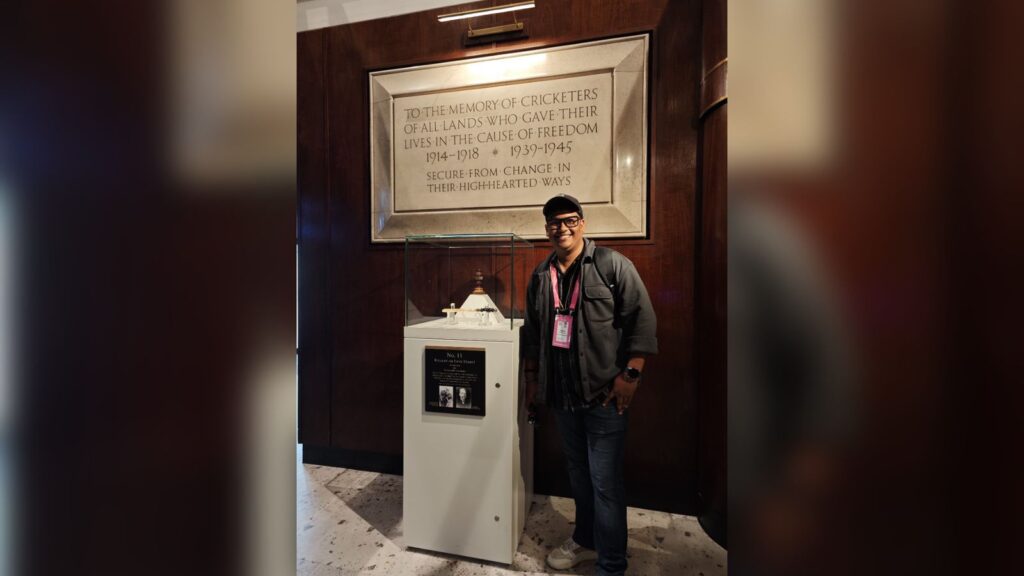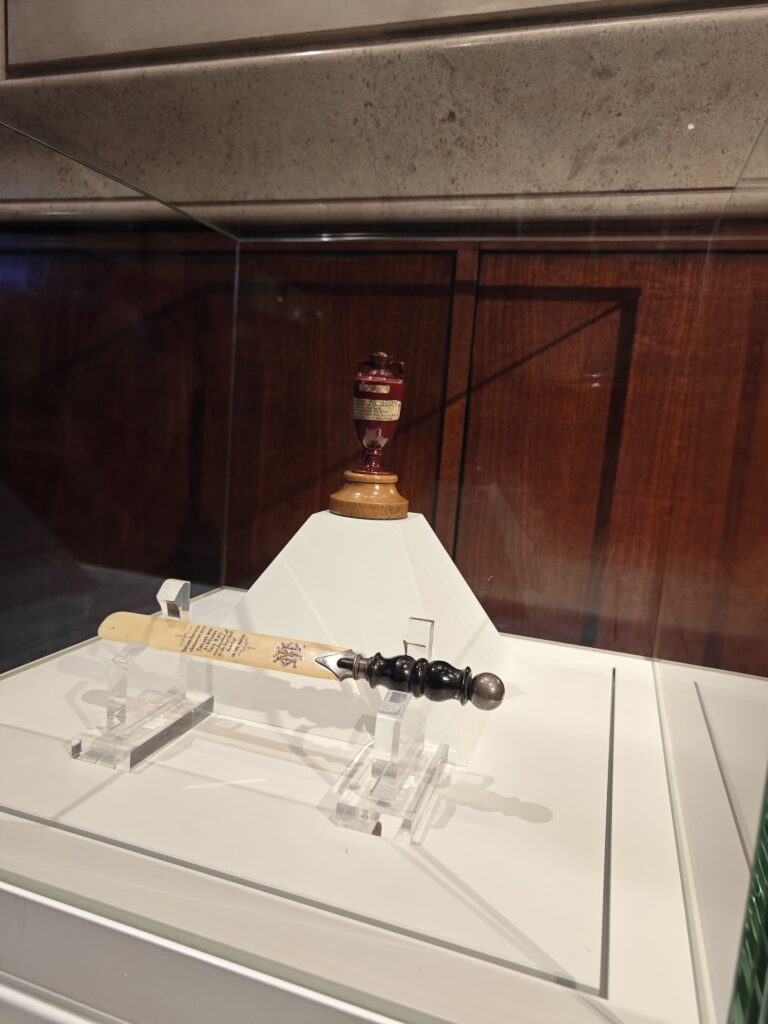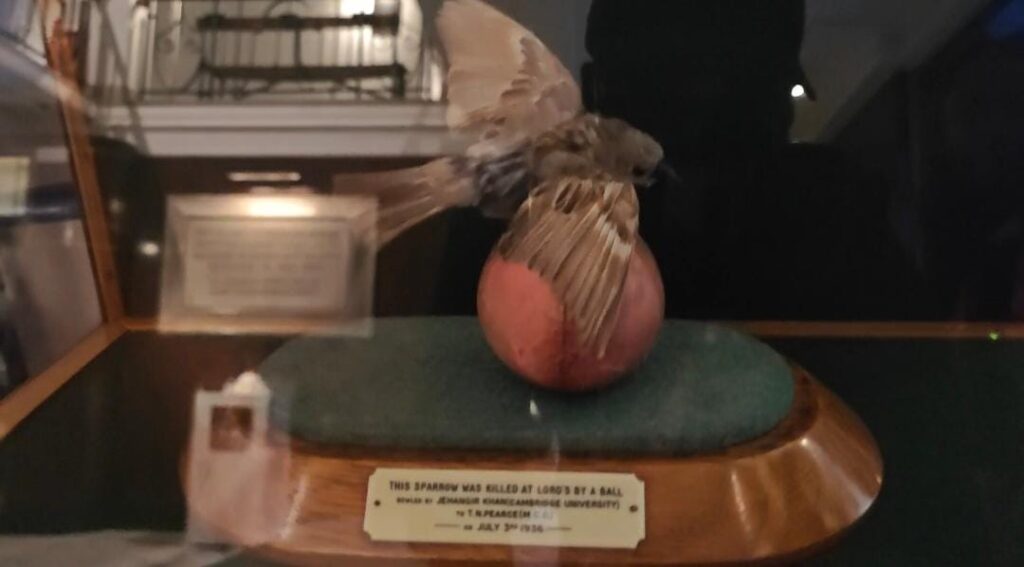
Rohan Chowdhury, Lord’s
Each brick at the Lord’s Cricket Ground has a story to tell. Established in 1814, this iconic venue in London’s St John’s Wood is more than just a stadium—it is the sacred Home of Cricket. From timeless battles to historic innings, Lord’s has witnessed generations of unforgettable moments that have shaped the soul of the sport.
Tucked inside its hallowed premises lies the Marylebone Cricket Club (MCC) Museum, a living time machine that carries visitors across centuries. Inaugurated in 1953 by HRH, The Duke of Edinburgh, it is one of the oldest sporting museums in the world and a custodian of cricket’s deepest lore.
From Jahangir Khan’s infamous ‘sparrow-incident’ ball to W G Grace’s mighty bats, from Kapil Dev’s 1983 Prudential Cup triumph to the rising legacy of the IPL, the museum holds a treasure trove of cricketing artefacts.
Among the most iconic relics is the Ashes urn, accompanied by a letter carved from a bail—a humorous gift from the Clarke family to English captain Ivo Bligh, in 1883. These are artefacts not even the richest collector could buy.

One of the museum’s most curious stories dates back to 1936. During a Cambridge University versus MCC match at Lord’s, Indian fast bowler Jahangir Khan, representing Cambridge, bowled a delivery to Tom Pearce that struck an unfortunate sparrow mid-air. The bird died instantly. Today, both the ball and the stuffed sparrow rest within the museum—an odd, yet unforgettable episode in cricket history.

The evolution of the cricket bat also gets a compelling spotlight. From the primitive, hockey-stick-like shapes of the 1720s to the experiments with the “mongoose bat” in modern T20s, visitors can trace how this simple tool has changed over time. The display includes bats used by cricketing greats like W G Grace, KS Ranjitsinhji, and Sir Donald Bradman—each piece a symbol of their mastery.
Jerseys and blazers from the 1932 Bodyline Ashes series, to Sourav Ganguly’s Kolkata Knight Riders jersey, all made the cabinets. Here, a special mention to Ganguly. For a Bengali at Lord’s, the 2002 Netwest Series and Ganguly taking off his shirt at the Lord’s balcony would always be special.
In a nutshell, the MCC Museum isn’t merely a collection of objects; it’s a repository of emotions, nostalgia, and reverence. For any cricket fan, it offers a chance to stand still in time and feel the heartbeat of the game’s rich heritage.
At Lord’s, cricket doesn’t just live—it remembers.
Follow Revsportz for latest sports news